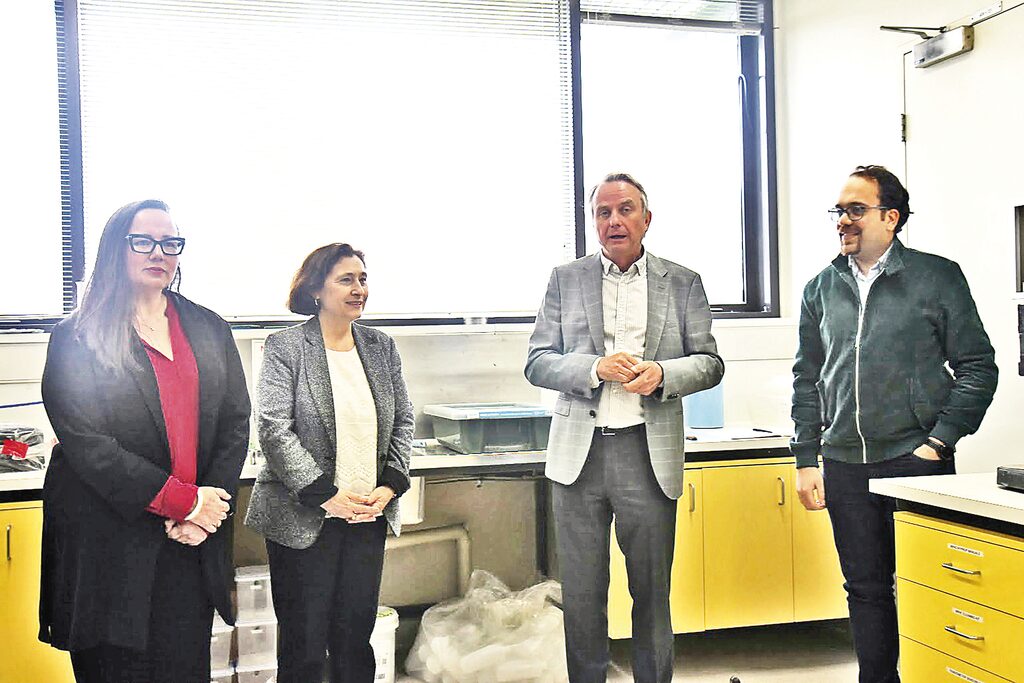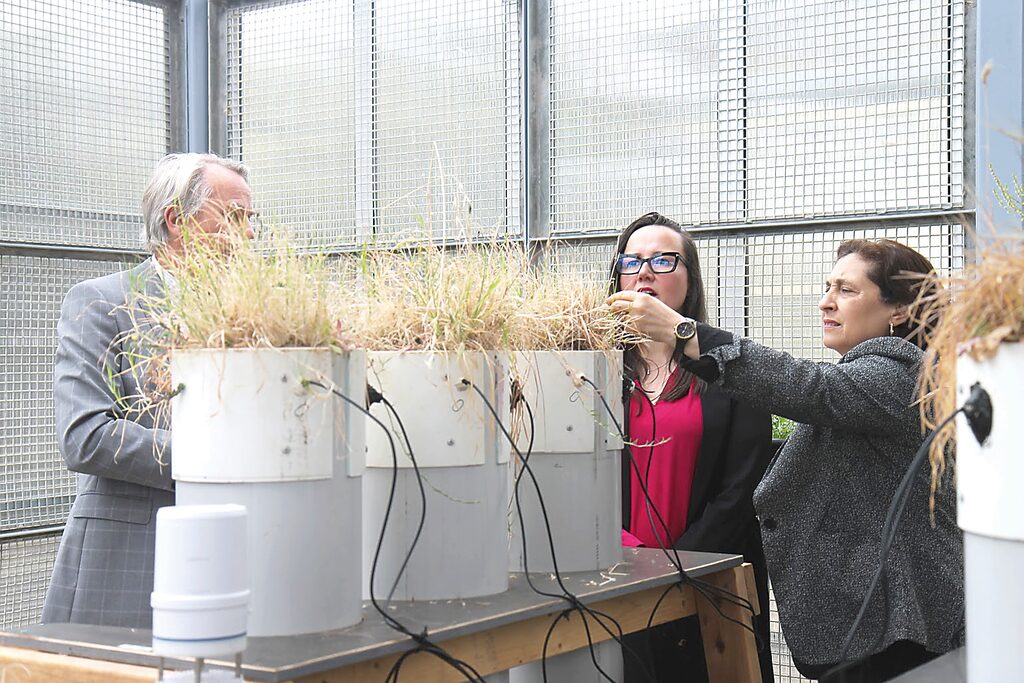
KATRINA BRANDON
By KATRINA BRANDON
THE operators of the Latrobe Valley coal mines will have to develop more detailed rehabilitation plans under amendments to the Latrobe Valley Regional Rehabilitation Strategy announced by the state government. The Minister for Energy and Resource, Lily D’Ambrosio, and the Minister for Water, Harriet Shing, released the first amendment to the strategy during a visit to Federation University on October 13. The amendment aims to place coal mine rehabilitation in a greater context, build on water access guidance and provide more certainty on the pathway to rehabilitating the mines. The aim is to ensure more transparent decision making from government and greater community engagement. Ms D’Ambrosio said that with community concerns, mine rehabilitation needed to be more comprehensive, on clearer terms towards the closure dates – 2028 for Yallourn and 2035 for Loy Yang A – and how rehabilitating the mines will be approached. “The community deserves to know that the mines will be rehabilitated in a way that provides them with the best outcomes possible, but it also means that having that certainty sooner rather than later is really important,” The Energy Minister said. In 2020, the state government released the first Latrobe Valley Regional Rehabilitation Strategy (LVRRS) and has provided a legislative mechanism for three-yearly reviews for mines, with this year being the first. In the reviews, there is a requirement that there is to be a 60-day minimum consultation period with the community. The draft is not to be submitted until the 60-day period is done and that the state government has shown the plans are clear and comprehensive. “This is about giving authorities, government regulators confidence that the communities have reasonable and fair input into the development of those proposed rehabilitation plans at the point that they have then submitted it to the government for consideration,” Ms D’Ambrosio said. In September last year, the new regulations were introduced which required declared mines to submit comprehensive rehabilitation plans by October 2025. Ms D’Ambrosio said the new requirements were “not about criticising any particular mine operator”. “There has been lots of studies, lots of consultations and lots of discussions across the community over the last few years on what’s going to happen with these mines and what purpose they can be put to, what’s realistic, what’s not realistic, what’s possible, what’s desirable, how are they going to be able to rehabilitate the Latrobe Valley in the frame of the best outcomes possible for the community,” she said. The studies have been undertaken with Federation University’s Geotechnical and Hydrogeological Engineering Research Group (GHERG), which has tested samples from the mine to see what works better with the mines’ soils, and whether different vegetation or species specification is better for the rehabilitation process. “Soils are evolving all the time and can either go the right way or the wrong way,” GHERG Director Professor Thomas Baumgarti, told the Express. He explained that it was about understanding the behaviour and conditions of the land to be able to see what is more sustainable and better for the neighbouring infrastructure. Ms Shing said rehabilitation of the mines must consider the impact on the climate and environment, on the community at large as weather systems continue to change over time. “The health of our waterways underpins the health of the industry, communities and Traditional Owner connection to Country, and that work continues to be done including a range of ways such as ‘Water is Life’, our Traditional Owner access and water road map to Traditional Owner connection to water, and the Gippsland Region Sustainable Water Strategy,” she said. “The Latrobe River System forms about a quarter of the total Gippsland lakes area. It has global significance as it relates to the waterways across this water path of regional Victoria.” The amendment allows for Yallourn and Loy Yang A mine operators to apply for surface water access at the same time, meaning the impacts of the projects can be reviewed together. Previously, mine licensees could only apply for water access within five years of their confirmed closure. These new conditions ensure that water access for mine rehabilitation will not diminish the water entitlements of existing water users and values in Gippsland and will mitigate the future impacts of a potentially drying climate. Following technical studies and stakeholder consultation, the conditions require that any potential access to surface water for mine rehabilitation should be restricted to the wettest times of the year only and avoid impacts to summer and autumn river flows. Mine licensees will not be allowed to take more than they have historically used. This historical use is about 35 per cent less than the volume of water AGL, Alinta and Energy Australia are currently entitled to access as part of their annual power generation activities at the Yallourn and Loy Yang mines. Ms Shing said the new amendment conditions, while protecting existing water users, built on the government’s recent agreement allocating 16 gigalitres per year to environmental Traditional Owner and agricultural outcomes by 2024. “We have invested significant time, energy and resources into creating a framework for future decisions to be taken around rehabilitation, around the obligations and responsibility of licensees,” she said. “We need to get that right,” Ms D’Ambrosio said. “The transition to renewables brings many opportunities for the Latrobe Valley that include transforming the coal-fired power stations and mine sites for new uses.” For more information, go to earthresources.vic.gov.au/lvrrs and federation.edu.au/institutes-and-schools/iiss/research/resources-engineering-and-technology/gherg











